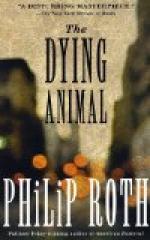|
This section contains 1,942 words (approx. 7 pages at 300 words per page) |

|
SOURCE: Bush, Ronald. “My Life as an Old Man.” Tikkun 17, no. 1 (January-February 2002): 77-80.
In the following review, Bush compares The Dying Animal to Fyodor Dostoevsky's Notes from the Underground and asserts that Roth's focus on private, male, sexual themes reinforces public stereotypes about his earlier works.
Philip Roth must have known he would be pummelled for this brief, ambiguous, and disturbing sequel to his acclaimed three-volume social history of post-war America—American Pastoral (1997), I Married a Communist (1998), and The Human Stain (2000). The Dying Animal's reversion to private, male sexual preoccupations goes out of its way to reinforce public stereotypes about Roth's previous work. That the novel continues his treatment of post-war culture in its principal subplot (the story of a first generation Cuban immigrant, Consuela Castillo), and that it signals a high level of narrative irony by resurrecting as its protagonist David Kepesh, the hapless hero of...
|
This section contains 1,942 words (approx. 7 pages at 300 words per page) |

|


